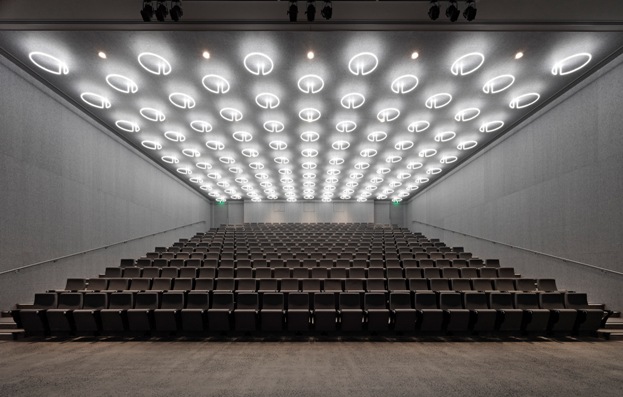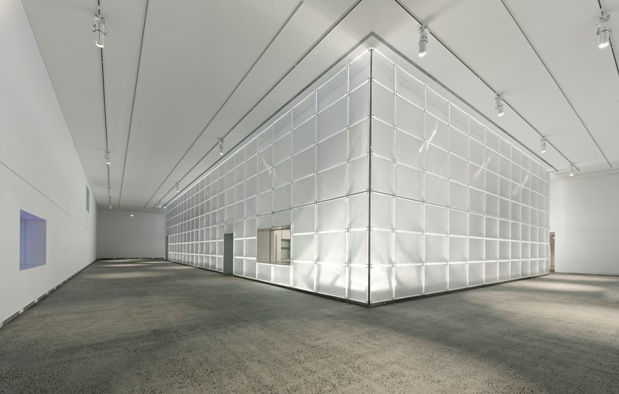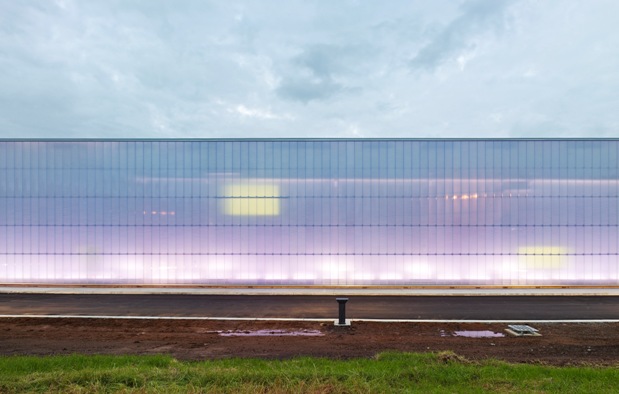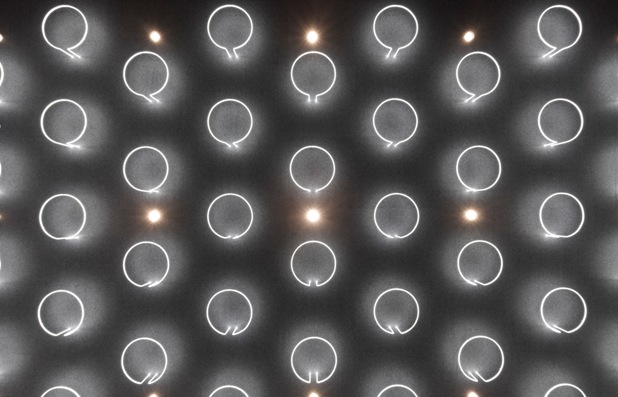The Bates Smart designed National Centre for Synchrotron Science (NCSS) in Melbourne is a modular building which uses light and colour technology on the facade to reflect the internal functions of the building.
The NCSS is a research and development centre for scientists who use advanced third generation 3GeV light source with high quality, low emitting, and stable electron beams to research light as a treatment for diseases such as cancer and Alzheimer’s.
Kristen Whittle, director at Bates Smart described the façade as having a skin which is made from Rodeca multi-wall polycarbonate and is finished in a two coloured paint which changes from a purple to green tint depending on the light.
“There’s a cavity which is around about 600mm wide which allows people to walk through it and in that cavity we have lights which line the full perimeter of the building which wash light up the façade,” said Whittle.

Alan Sanders from Rodeca, said that the polycarbonate translucent panels are a fully recyclable plastic.
“It is tough, lightweight and hard wearing (astronaut’s helmet visors are made from polycarbonate) and is very safe as it does not support combustion.”
He said the architects at Bates Smart were looking for a ‘glowing’ effect similar to the RIBA’s Stirling Prize winning building, the Laban Centre in London, which used the Rodeca panels.

“The night-time effect at the Synchrotron was achieved by inserting special lighting between the Rodeca façade and the precast concrete walls. This was designed by Kristen Whittle at Bates Smart who has a great deal of experience with our products being used in this way, having designed the Rodeca cladding for the Laban Centre while working at Herzog & de Meuron Architects,” said Sanders.

The façade systems provide a completely smooth unbroken surface through a tongue and groove system which allows the required light effect to be achieved at night with a clean modern look in day-time.
Whittle said that Rodeca was chosen not only for aesthetics but also because of the cost effectiveness of the material and its intrinsic energy efficiency.

“The client wanted the building to speak about what they do as an organisation, which is to use light - the purest form of light - to do scientific experimentation. Light was always going to be almost like a building block for us, so having a double skin meant that we could illuminate the building and basically have a lit cube as a statement that would be magic to look at, at night time and in the daytime. The translucency gives an ethereal elegant quality to the building.”
When it came to the design of the building, Whittle drew inspiration from the surrounding industrial suburb of Clayton.

“We knew that polycarbonate panels are traditionally used in warehouses and factory type buildings so we wanted to have a humble material that could resonate with that context but also do something dynamic and transformative which is why we used the paint finish with it to make it a souped up, amped up shed building.”
Sustainability was a priority in designing the building which led the team to install a light wall that wraps around the auditorium.

“We used polycarbonate roof lights to encircle the auditorium and in the roof lights we have sheets of lenses that push natural light down and into this wall.”

This large wall provides natural light which extends deep into the building and along with solar panels, rainwater tanks, underfloor heating and bicycle storage facilities; energy efficiency has been carefully considered.
Architectural Building Elements is the Australian distributor of Rodeca translucent polycarbonate roofing and facade sheets.


